
|   |

|   |
65th Swami Haridas Sammelan - Vijay Shanker e-mail: vijaydance@gmail.com May 24, 2025 Mumbai's leading cultural organisation Sur Singar Samsad organised the 65th Swami Haridas Sammelan in Mumbai on Saturday 29th March and concluded on Monday 31st March at Nanavati College campus auditorium, Vile Parle west. With the collaboration of Nanavati Performing and Fine Arts Forum and with the support from the Ministry of Culture, Government of India, the three days festival of classical dances featured top classical dancers from across the country. 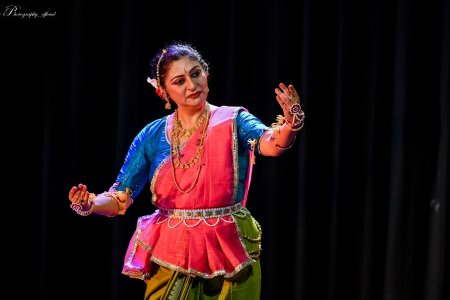 Poushali Chatterjee The festival commenced with Manipuri dance by Poushali Chatterjee from Kolkata and guest performance by veteran Manipuri exponent Darshana Jhaveri. The performance commenced with Alaap Prabanda, a fine combination of Tala, Swara and Sargam based on taal Mankep and taal Tanchep. The dance also forms a combination of musical syllables, lyrics and tenaka (words) like 'Taritena din, Tandereta na'. Besides the typical graceful movements, this dance is offered as a Bhavmurti of Srigouranga pertaining to the divine relationship of Radha and Krishna. This was performed with elegance and precision by Poushali Chatterjee. The next number was Abhisarika, that forms the 64 divisions of Sringara. Here the nayika sets out late in the night, facing many obstacles but ultimately meets her destination and unites with her Lord, performed with subtle expressions and sancharis by Poushali. The finale number was popular ashtapadi "Yahi Madhava Yahi Keshava" where Radha is portrayed as kandita nayika. She waits endlessly and her Lord arrives early in the morning with telltale marks on his body. Radha is enraged and asks him to leave. Radha was played by Darshana Jhaveri with the required pathos and anguish and Krishna was played by Poushali. It was really thrilling to watch Darshana Jhaveri performing with innate grace and subtle expressions. Accomplished Kathak dancer from Nashik, Guru Rekha Nadgauda and her disciple Aditi Panse gave a brilliant Kathak performance. They commenced with an invocatory Ganesh Vandana in raag Bhoop, followed with varied pure dance sequences in teentaal performed with precision and fine layakari. The performance concluded with a beautiful Bhajan by Anup Jalota, "Prabal prem ki palpar, Prabho ko niyam badalte dekha" (l have seen God changing the laws of life and love). That formed a fine synthesis of the philosophy of life and artistic expression. On the padant was Madhushree Vaid, tabla by Sujit Kale and harmonium by Ishwari Dasakkar. 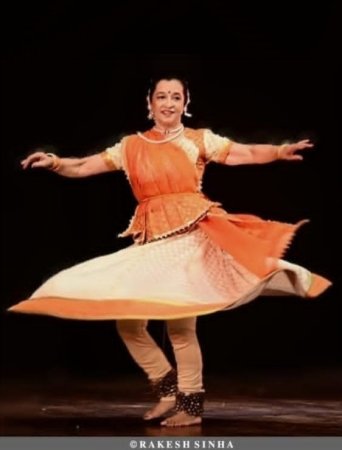 Rekha Nadgauda 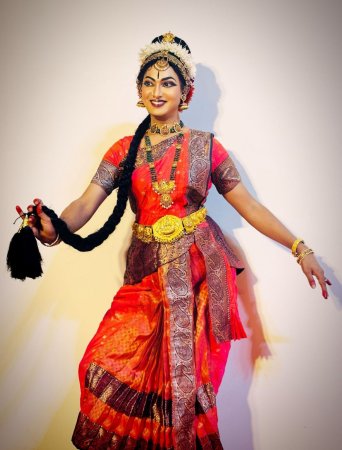 Ajay Kumar The highlight of the first day was stree vesham portrayal in the Kuchipudi style by Ajay Kumar from Vijayawada, Andhra Pradesh. Ajay performed Ashta Nayika, the independent Svadhinapatika, the one who eagerly waits for her lover; Vasakasaka sajja, the one who fights with her lover and regrets; Virahotkantita, the one who is cheated by her lover; Vipralabda, the one is rejected by her lover; Khandita, the one who sets out to meet her lover; Abhisarika, the one who suffers from separation; Vinogini and the one who loves someone else besides her husband, Svadhinabatruka. Ajay is undoubtedly among the best stree vesham performers of the country, the soft movements, the coyness and bashfulness and the subtle glances is an unusual experience to behold and appreciate. 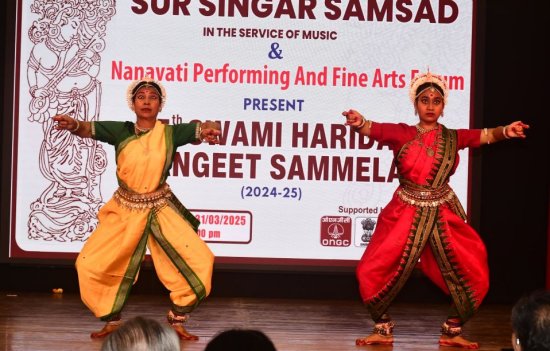 Pratibha Jena Singh and Raudri Singh The second day featured the exquisite classical dance of Orissa, Odissi duet by Guru Pratibha Jena Singh and her disciple Raudri Singh from New Delhi, inspired by the style of Guru Surendra Nath Jena. The duo started their performance with Matrupranam Mangalacharan, an invocation to Mother goddess Durga, revealing her virile and benevolent aspect of the universal mother, followed with the ashtapadi "Sakhi hey Keshi mathana" in which the nayika reveals to her Sakhi the glory and her intimacy with Lord Krishna with natural expressions and involvement. 'Shilpa Chandrika' by Guru Pratibha Jena is a fine testimony on her research of the 16 nayikas and other characters portrayed in the temple sculptures of Orissa, based on Shilpa Prakash penned by Ramchandra Mahapatra. This was the highlight number of the evening. The duo concluded the performance with a devotional number Hanuman Chalisa in praise of Lord Hanuman, as described by Goswami Tulsidas. 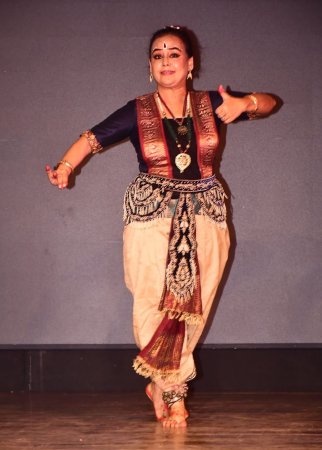 Prateesha Suresh The only Sattriya dancer of the festival, Prateesha Suresh enchanted the audience with an engrossing performance. Navarasa Rama, as the title suggests, the various characters with the depiction of a particular 'rasa', commencing when Lord Rama enters Mithila, the people are surprised at the charm and beauty of the young prince, hence it is 'adbhuta rasa'. When Rama enters the Swayamvara, the reaction of the other kings turns into 'hasya rasa' as they are unable to break the Shiva Dhanush. However, Lord Rama lifts the arrow with effortless ease, showing the 'veera rasa'. Subsequently, Sita moves forward to garland the young prince, then it is 'sringara rasa' but with the presence of other kings, Sita is worried as to whether Rama would be able face the kings with his bow, then it is 'karuna rasa'. The other kings are angry at the feat of Rama, hence it is 'raudra rasa' but Lord Rama and Lakshmana move forward to defend Raja Janaka, then it becomes 'bhayanaka rasa' due to the ongoing tussle. Rama and Lakshmana defeats the kings and their blood is strewn around, creating 'bhibhatsa rasa'. Finally, Rama weds Sita and then it is 'shanta rasa'. The music was in different ragas sung by a male singer with the percussion music khol. The sitar music was added to provide the required impact. Prateesha was attired in the dhoti in order to display both male and female characters with ease. Navarasa Rama was based on two literary texts from Assam, the Assamese Ramayan written in the 14th century, written by Kaviraj Madhav Kandali and the One act play of Srimanta Shankardeva, Ram Vijay written in the 15th century. Accomplished Kathak exponent and mentor, Dr Tina Tambe is the founder director of Ninad Centre of Performing Arts in Mumbai. Tina commenced her performance with Dasavataram, incorporating the ten incarnations of Lord Vishnu with expressional excellence, followed with brilliant footwork in teen taal. Tina concluded her performance with yet another abhinaya number 'Draupadi ki Pratiggya' in which Draupadi takes a vow that she will tie her hair, only after it is smeared with the blood of Dushasana. The highlight of Tina's performance was the touches that is accumulated with the technical qualities of the three gharanas that she has been closely associated with. 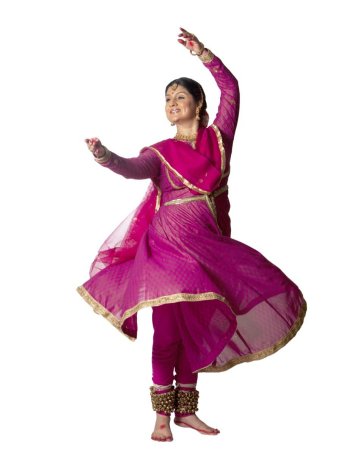 Tina Tambe 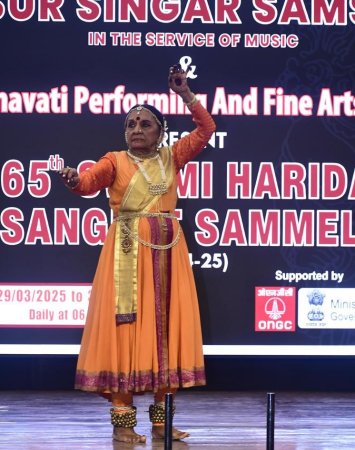 Sunayana Hazarilal The third day finale performances featured one of the seniormost Kathak exponents of the country Sunayana Hazarilal and her talented disciples Aruna Swamy and Sheetal Mavlankar with the rendering of the composition of Dr Prabha Atre, "Shiv Har Har Mahadeva" in praise of Lord Shiva. Sunayana seamlessly moved into the intricate rhythms of Uthaan, Tode, Tukde, Tripalli Paran and the rare and intricate Saar Parans, a hallmark of the Banaras Gharana, founded by Pt Janakiprasad, hence also known as Janakiprasad Gharana. The performance concluded with an expressive and romantic thumri, proclaiming the arrival of her beloved in "Aaj ayenge banke more saiyyan" rendered with profound involvement, creating a lasting impression on the select audience. The live musical orchestra was led by Pt Kalinath Mishra on tabla, Somnath Mishra on vocal and Alka Gujar on sitar. Guru Deepak Mazumdar elevated the mood with his powerful and profound abhinaya in the Bharatanatyam style with 'Sur Ke Shyam, Tulsi Ke Ram' incorporating bhajans of saint poets Surdas and Tulsidas. Commencing with Surdas bhajan, "Hey Govind, Hey Gopal" in which the poet draws your attention to the four stages of life - childhood, teenage, youth and old age - and narrates the episode of Gajendra Moksham in which the elephant is symbolised as the inflated ego of the human beings and the crocodile is represented as the desire, hence the tussle takes place as the crocodile attacks the elephant. The ego is shaken when ultimately Lord Vishnu appears with his Sudarshan chakra and destroys the ego and Gajendra attains Moksha. In the Tulsidas bhajan "Ram charan sukh daye" Lord Rama is portrayed as Deen Bandhu as he protects and saves his devotees who are ordinary persons like the boatman, Hanuman etc. 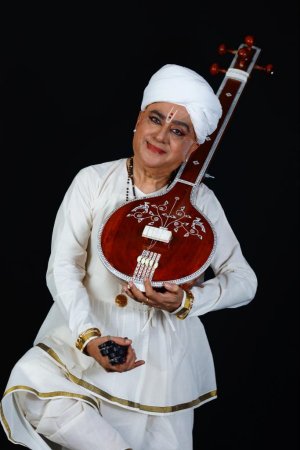 Deepak Mazumdar 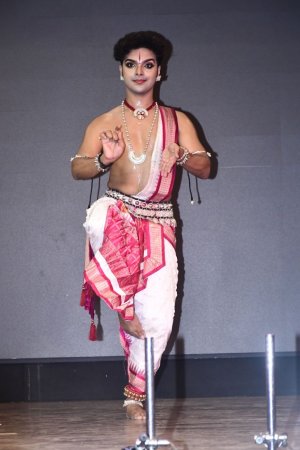 Jeet Ghosh The graceful and lyrical Odissi was performed by Jeet Ghosh from Kolkata forming the grand finale. MK Patel, the soul of Sur Singar Samsad said," The Swami Haridas Sammelan is organised with hardly any corporate support but what keeps me going is the love and warmth I receive from the artistes and the audience." 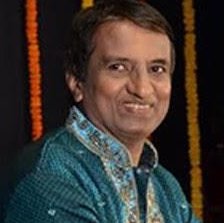 Vijay Shankar is a Kuchipudi and Kathakali exponent, teacher, bilingual journalist, arts critic and actor. |